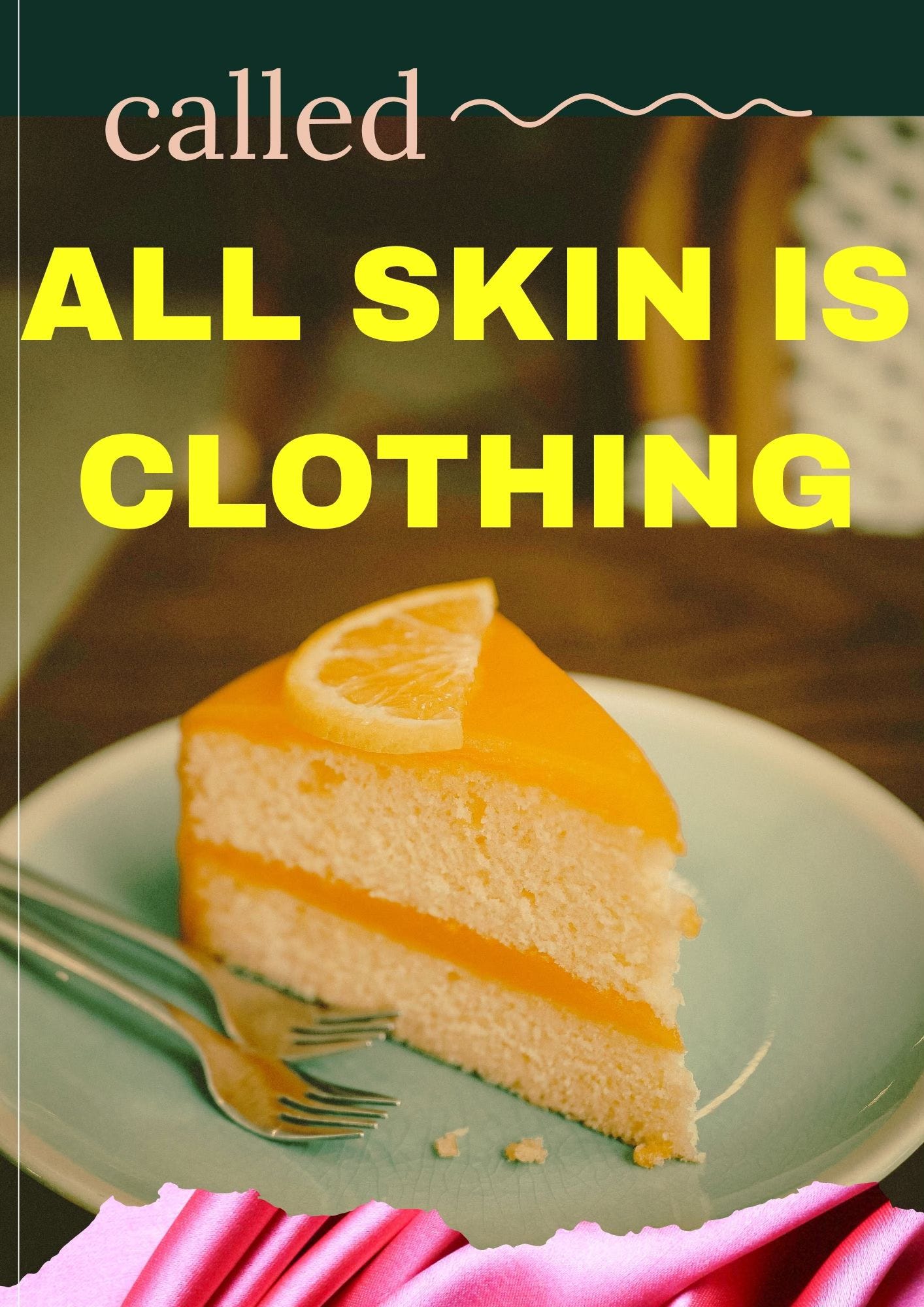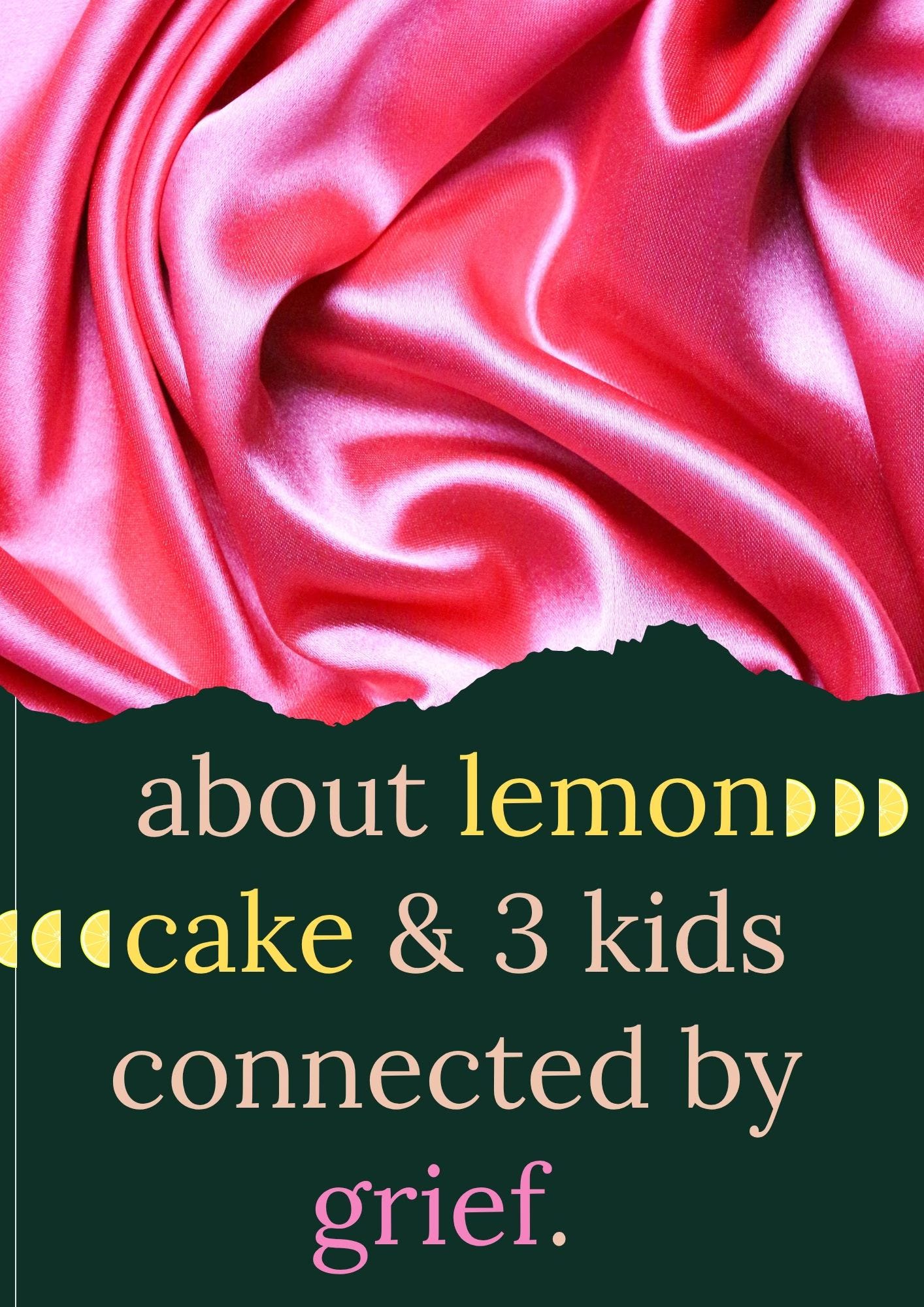Lemon Cake & Grief: Annotating A Short Story
Break down "All Skin Is Clothing," a short story by Carrie R. Moore from her just-published collection Make Your Way Home.
Synopsis for “All Skin is Clothing” by Carrie R. Moore.
Two siblings, Brayden (6) and Cadence (15), have a near-death experience. As a result, their family moves to a new house in a new neighborhood. Brayden and Cadence quickly befriend Nelson, their new neighbor who is an older boy that has just lost his brother in a car accident. Throughout this story of shared grief, Brayden and Cadence prepare for their father’s 50th birthday celebration. A lemon birthday cake (that is shared with Nelson twice) is a beacon of sweetness in this story.
Peeling Skin. Cheery Yellow. Invisibility.
These were my annotations and also my three entry points for deeper analysis of this story. Walk through them with me.
Peeling Skin.
The title of the third story “All Skin is Clothing” is a reference to boo hags, the skin-shedding witches of Gullah folklore. Brayden learns the boo hag tale in a homeschool lesson with his mother. Boo hag skin imagery simmers in this little boy’s imagination, sometimes affecting how he perceives the skin of his loved ones. Braydens’ private projections of boo hag imagery on people and things was my first annotation.
my boo hag (skin) annotations.
“Yellow light so harsh it scraped the house across the street, its peeling charcoal paint.” p 46
“His mother, who had screamed, the loose skin around her mouth echoing the shape, as if he could peel it back and she’d be only shrill sound and bone.” p 49
“A boy, his suit draping over him like an older man’s loose skin…” p 50
“‘Why would you leave your skin behind? Who would watch it for you?” p 53
“…a nightmare where Cadence took off her face—” p 57
“That energy stretching out her skin.” p 61
“…she wrapped her potato in a paper towel, peeled it open.” p 61
“Daddy was suddenly a boy himself, as if all that skin and muscle had peeled back like a puffer coat, revealing someone amazed this day had arrived.” p 65
Cheery Yellow.
The color yellow is a frequent interlocuter in this story. I annotated it meticulously because it felt like a constant reminder of life and vitality in a story that’s so haunted by the fear and reality of death.
The first yellow we see is the glare of street lights, seen through a bullet-shattered window. This yellow gets left behind when Brayden’s parents sell the home, and it’s the only example of harsh yellow in the story. In their new home, the family surrounds themselves in softer shades of yellow: cheery paint, a cozy couch, lemon cake, and bananas.
my 12 yellow annotations:
Yellow light. A yellow kitchen.
A yellow couch. Lemon halves.
Egg yolks. Frizzy amber hair.
Honey. Daffodils.
Lemon cream. Lemonade.
Bananas. Lemon birthday cake.
Invisibility.
When Brayden thinks about his own invisibility in the story, something clicked about all the window details. There are many moments where characters stand by windows, looking out, observing All this “seeing through” and “see-through glass” paired quite eerily with a little boy feeling unseen.
I am invisible, he thought.
Or so many things in the world were.
p 61
my 10 window annotations:
the bullet-shattered window in the shotgun home, p 46
Brayden’s dad staring out the window in their new home, p 49
Brayden wanting Cadence to move her bed away from the window, p 50
Brayden and Cadence looking at a funeral procession through the window, p 50-51
the boo hag’s lover who observed her and “broke in through the window,” p 53
“On the other side of the sliding door…That glass sealed them away.” p 60
how “rain sprayed the windows for three days straight” p 54
“‘So he didn’t get shot?’ Brayden asked. Deep in his mind, bullets fractured car windows. A boy’s face shattering. ‘Naw,’ Nelson said. ‘A car accident.’” p 56
Brayden noticing his sister’s attention all on him because she “didn’t once glance out the den window,” p 58
Brayden peeking thought the window at Nelson before answering the door, p 65
Like the volta of a sonnet or Lucille Clifton poem1, the final paragraph lands with so much clarity and surprise.
The final paragraph of this story is a such a clever surprise, like the volta of a poem. It wraps up this short story of grief story so poignantly, satisfyingly, and deftly.
Before I share the final paragraph, I want to explore one reason why it worked so well for me in this moment. Right before the end, all the imagery I annotated (skin, yellow, windows) comes tightly together. The yellow light that began the story is gently alluded to with this scene’s orange light, which strangely obscures Brayden’s fingertips. Brayden is safe in mind and body in this scene. He’s far from the bullet-shattered bedroom window that opened the story. He sits at the kitchen table, surrounded by family, his dad’s lemon birthday cake in front of him (yellow) with the candles just blown out. The story ends when Brayden reaches out to take a cooling birthday candle from his sister’s hand (skin). There’s a different type of window in this moment, a window of clarity:
He wondered if this was how you managed, each person taking something small from the person beside them, one by one as the heat dwindled, until what you carried could finally be set down..
THANK YOU
for this book recommendation!!! It’s gorgeous, just like you said it would be.“The voltas are volta-ing!” - Traci Thomas —Go listen to
and talk about Lucille Clifton’s voltas in Episode 369 of The Stacks Podcast.





I’ve got to read this!
I have Make Your Way Home on my calendar to order 8/01. I saw the cover and fell in love.